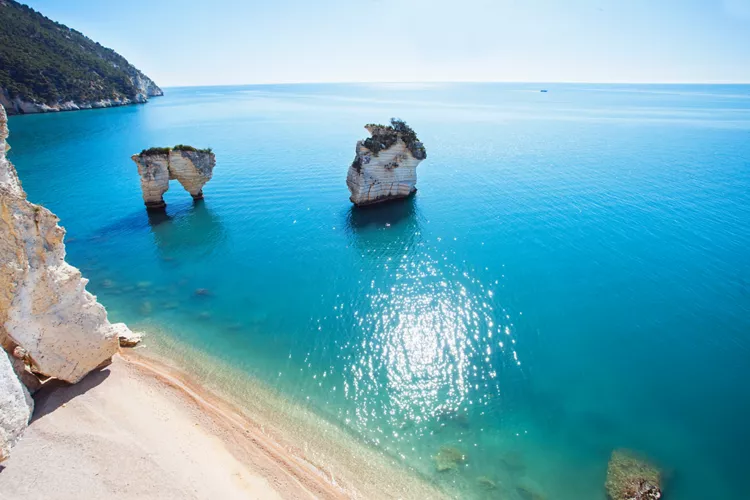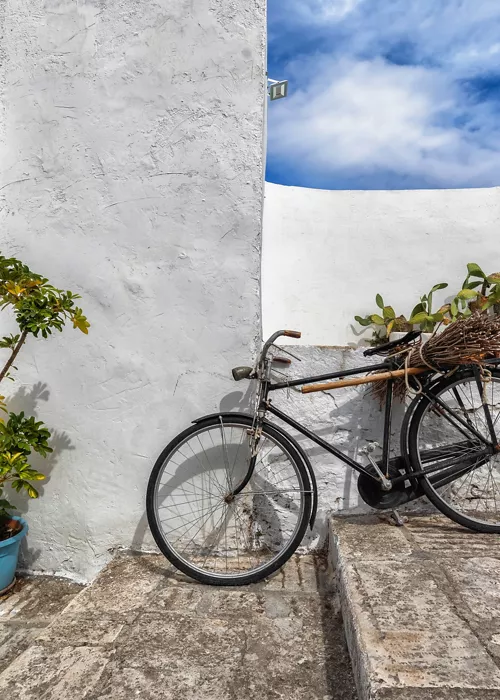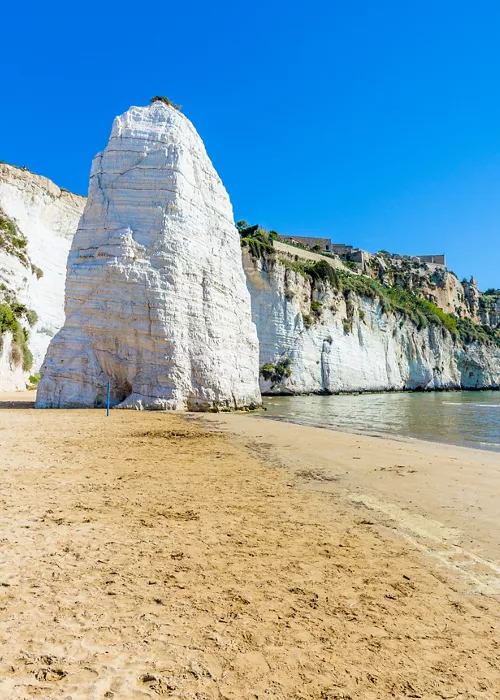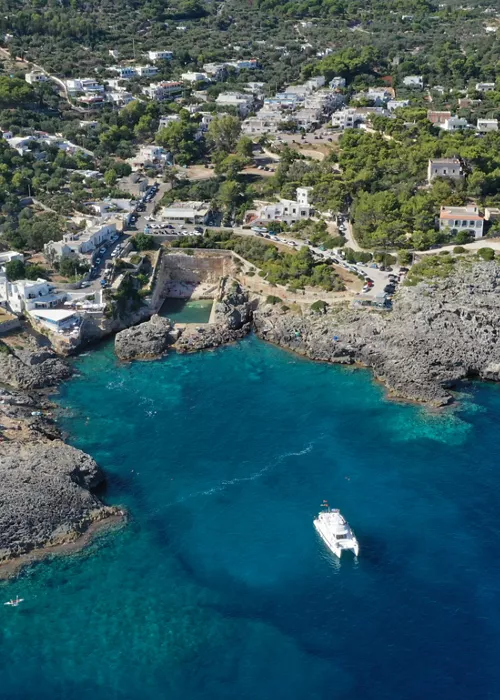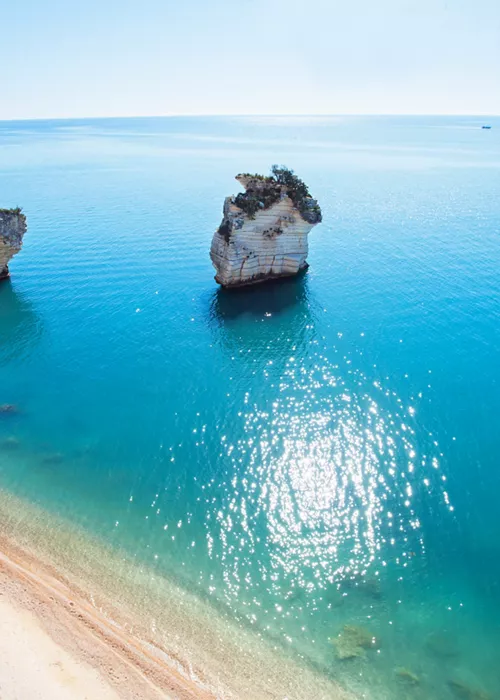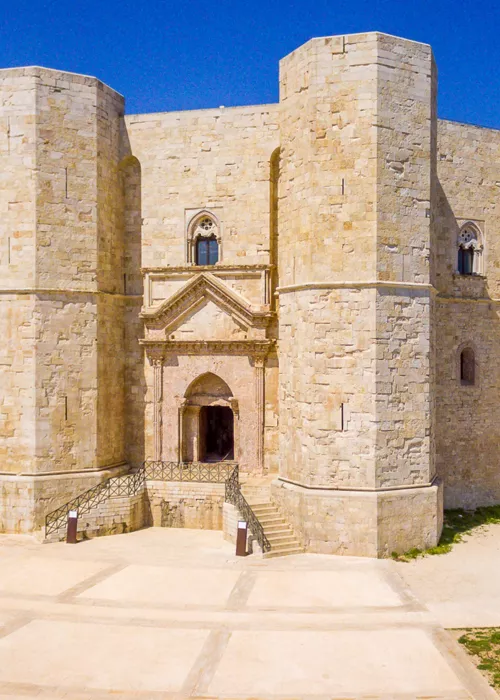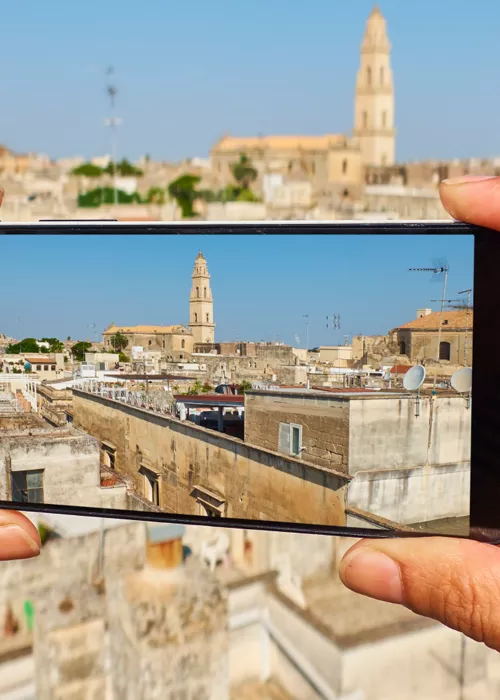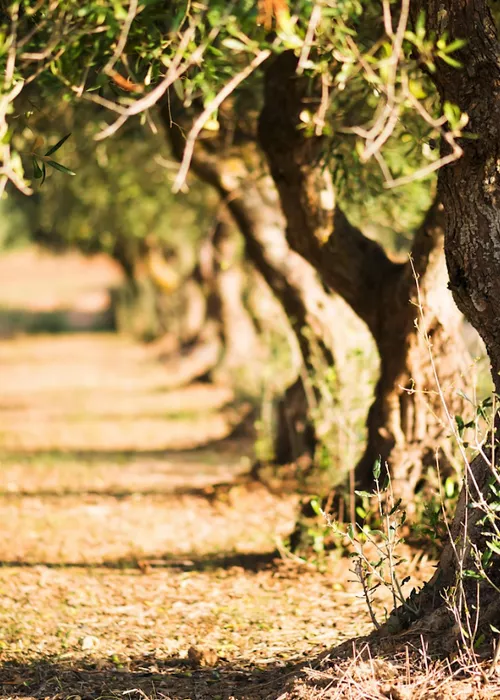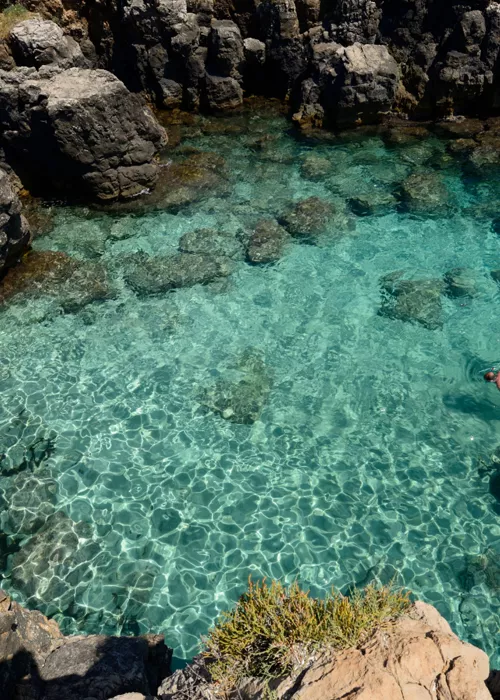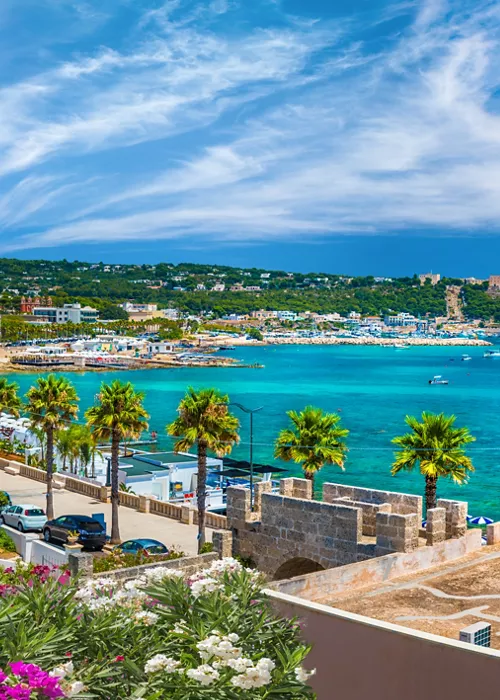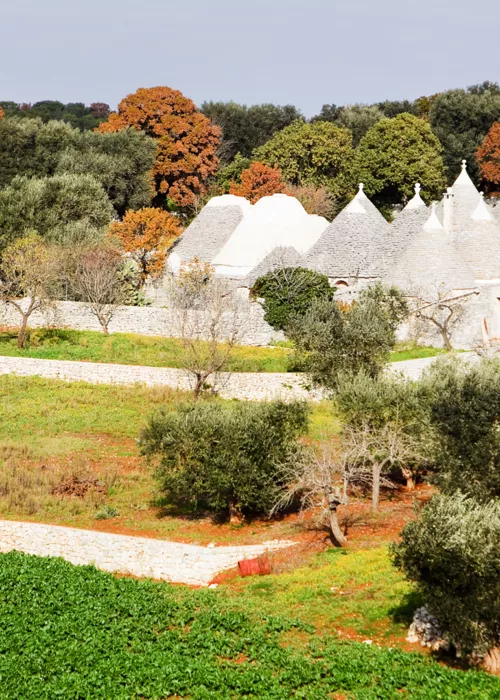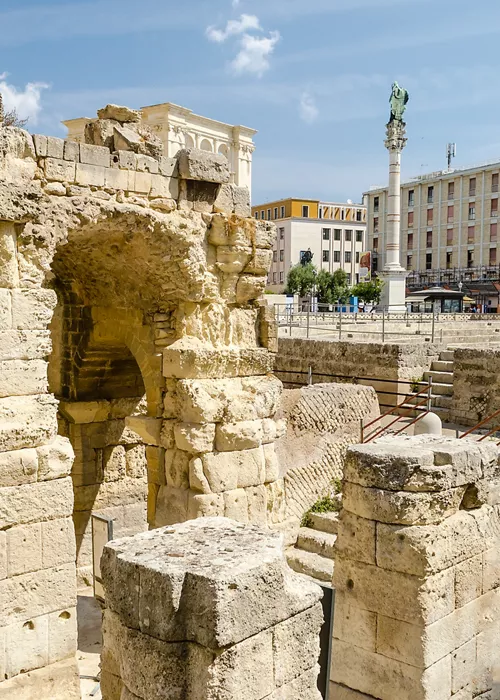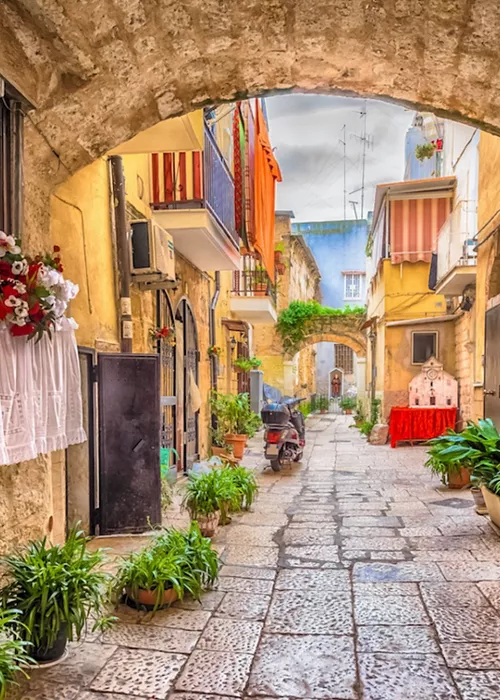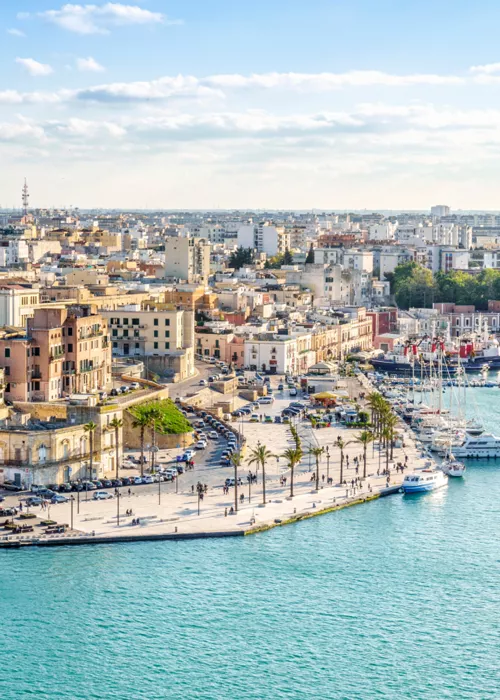The Baia delle Zagare is the pearl of Mattinata on the Gargano
A pair of mighty limestone stacks sculpted and shaped by the wind are the hallmark and distinguishing feature of Baia delle Zagare, also known as Baia Dei Mergoli, near Mattinata, on the Gargano, the headland to the north of Apulia that encompasses varied and stunning landscapes.
A high wall of white cliffs behind, covered by dense vegetation, and a clear blue-green sea in front: this is the identikit of one of the most exclusive seaside resorts known for its light-coloured sand, mixed with white pebbles and split in two by a high limestone cliff.
Orange groves, blackbirds and stacks
Called Baia delle Zagare, for the orange and lemon trees that perfume the air with their blossom, but also Baia dei Mergoli because of the populous colony of blackbirds that nest here every year, the Bay is the perfect destination for those seeking an immersive experience in the intense Gargano landscape.
It is also one of its landmarks: just a few metres from the shore, the Faraglioni, one of which is called the Arch of Diomede, or the Magic Arch, because, according to the locals, it brings good luck to swim across it, and the other called The Scissors, have over time been the backdrop for many postcards and the cover image of many travel magazines.
In short, it is one of the most photographed landscapes in Apulia, celebrated even by the New York Times, which calls Baia delle Zagare "one of the places to visit at least once in a lifetime", and by National Geographic, which lists it as "one of the 10 most beautiful beaches in the world".
One beach, or rather three
Protected by the imposing white cliffs and bathed by a sea that oscillates between emerald green and cobalt blue, the beaches, which extend for about 1 kilometre, are actually two, not communicating and separated by a large rock spur: the first, further north, towards Vieste, is called Baia dei Faraglioni and is made up of sand and gravel; the other is the authentic Baia dei Mergoli, or Baia delle Zagare, has a sandy shore of smooth white pebbles and is located to the south, towards Mattinata. The beaches would actually total three, counting also the small Cala dei Morti, the northernmost one, made of gravel and accessible only by sea. Despite its dismal name, it would have saved the lives of many sailors at the mercy of the waves caused by a violent swell.
A paradise for the few
It is recommended to reach the Spiaggia delle Zagare in the morning, when the sun is high in the sky, because in the afternoon it sets early hides/ behind the high cliffs, leaving the beach in shadow.
Accessibility is the only sore point of this corner of marine paradise: the beach is almost entirely occupied by the bathing establishments run by the hotels above it, and access is allowed only to hotel guests, who can reach it by using a direct lift carved into the rock, and to the holders of a limited number of non-transferable passes, distributed daily by the Municipality's Public Relations Office and the Mattinata municipal police.
At hotels only, it is possible to park for a fee, reserve sunbeds and umbrellas and take a steep ramp of 100 steps to the beach, where there is a small bar.
Alternative routes, between sea and mountains
An obligatory stop on the many boat excursions, departing from Vieste or Mattinata, to discover the Gargano's rich heritage of sea caves, the bay can be reached by sea or through ancient paths that lead from the mountain to the lido and depart from the main road, the Litoranea SP53. Before walking along them, it is strongly recommended to ask the operators on site for information, to avoid taking badly signposted, bumpy or even closed paths.
The view from the top of the Love Trail, with one last swim
An interesting alternative, especially for lovers of trekking and eco-friendly holidays in general, is to enjoy the breathtaking view of the bay from above, by taking the Mergoli-Vignanotica path, also known as the Sentiero dell'Amore (Path of Love): this is a well-marked panoramic path about 3 kilometres long, which takes less than an hour to complete, and is accessed from the coastal road SP53.
Immersed in the Monte Barone Nature Reserve, amidst almond, Aleppo pine and olive groves, in the initial part the route offers a stunning view of the entire bay with its white stacks. At a certain point on the route, you will come to a fork: the advice is to keep to the right and take the path that descends towards the beautiful beach of Vignanotica, equipped in summer with services and refreshment points. Here, hikers can finally enjoy a well-deserved swim in waters that are no less crystal-clear and inviting.



